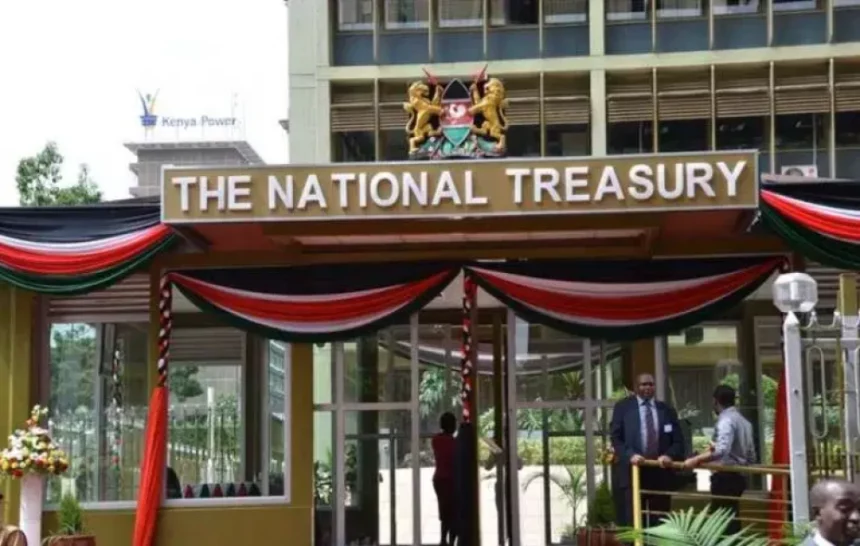A Sh375 billion revenue shortfall in the financial year ending June 30 nearly crippled government spending plans, new data from the Treasury show.
Total exchequer revenue in the period fell shy of the mark, with key sources of funding including taxes and domestic and external borrowing falling below expectations.
Ordinary revenue by the Kenya Revenue Authority (KRA), for instance, trailed exchequer targets by Sh101.4 billion while gross domestic borrowing was only 73.5 percent of the targeted Sh948.1 billion.
Subsequently, the Treasury could not disburse Sh377.4 billion in the concluded 2022/23 financial year.
All revenues, including gross domestic and external financing, added up to Sh3.244 trillion.
Domestic borrowing and external loans and grants stood at Sh696.4 billion, including rollovers, and Sh488.3 billion respectively.
The disclosures show total exchequer issues covering spending on debt, recurrent, development and the equitable share to counties totalled Sh3.243 trillion against the budgeted 3.62 trillion.
During the 12-month cycle, the exchequer paid Sh1.314 trillion via the consolidated fund services towards public debt payment, pension and gratuities and salaries and allowances to constitutional offices.
Recurrent spending in the period meanwhile stood at Sh1.222 trillion against a target of Sh1.268 trillion while disbursements to development were shy of the Sh374 billion mark at Sh308 billion.
Counties meanwhile received their entire allocation of Sh399.6 billion in equitable share, which included Sh29.6 billion in arrears from the previous 2021/22 fiscal cycle.
According to analysts, the missed spending targets by the government likely mirror the under-absorption of the budget, especially within the ranks of ministries and state departments.
However, the off-target expenditures can be attributed to overestimations on expenditures such as debt repayment and pensions.
“I would attribute the missed target on spending to low absorption of funds both recurrent and development which is hardly surprising given the budget outturn in previous years. On public debt service, I would presume that the National Treasury had pencilled a faster weakening of the shilling or higher debt servicing obligations which did not materialize,” Churchill Ogutu, an economist at IC Asset Managers said.
In the previous 2021/22 cycle, total government expenditure was off the mark by Sh256.4 billion, which included the missed equitable share disbursements as the government failed to raise Sh277.1 billion in revenues.
The International Monetary Fund (IMF) has warned of ramifications from revenue underperformance in the new budget cycle including carryover spending from last year.
The multilateral lender noted last week that the Treasury could be forced into crafting a new supplementary budget as soon as October to cover any carryover spending, keeping the 2023/24 fiscal targets in line.
“Spending cuts envisaged under Supplementary II may not be sufficient to offset the reduction in available resources and avoid a significant accumulation of unpaid bills at the end of June 2023 which will carry over to the 2023/24 financial year,” the IMF noted.
“Should there be a carryover of unpaid bills, the authorities have identified budgetary offsets for up to 0.9 percent of GDP to be considered in a supplementary FY2023/24 budget expected to be submitted to Parliament by the end of October to ensure observance of fiscal targets.”
Last year, the new Kenya Kwanza administration was confronted with spending pressures from carryover spending after the previous administration underperformed on revenues, resulting in reduced spending from the target and the subsequent postponing of expenditures.
According to the IMF, carryover expenditures from the 2021/22 fiscal year were 0.6 percent of GDP while a further 1.3 percent of GDP represented unbudgeted expenditures, including emergency spending on subsidies and drought.
In the new fiscal year, the Treasury has programmed expenditures of Sh3.68 trillion to be funded with a combination of borrowing, revenues and grants.
Recurrent spending is expected at Sh2.53 trillion while the equitable share to county governments is projected at Sh385.4 billion.
Total revenue collection, including appropriation-in-aid and grants, has been estimated at Sh2.96 trillion, of which ordinary revenue is Sh2.57 trillion.
The fiscal deficit to plug financing for the budget has been estimated at Sh718 billion or 4.4 percent of GDP, including Sh586.5 billion in net domestic financing and Sh131.5 billion in net external financing.




